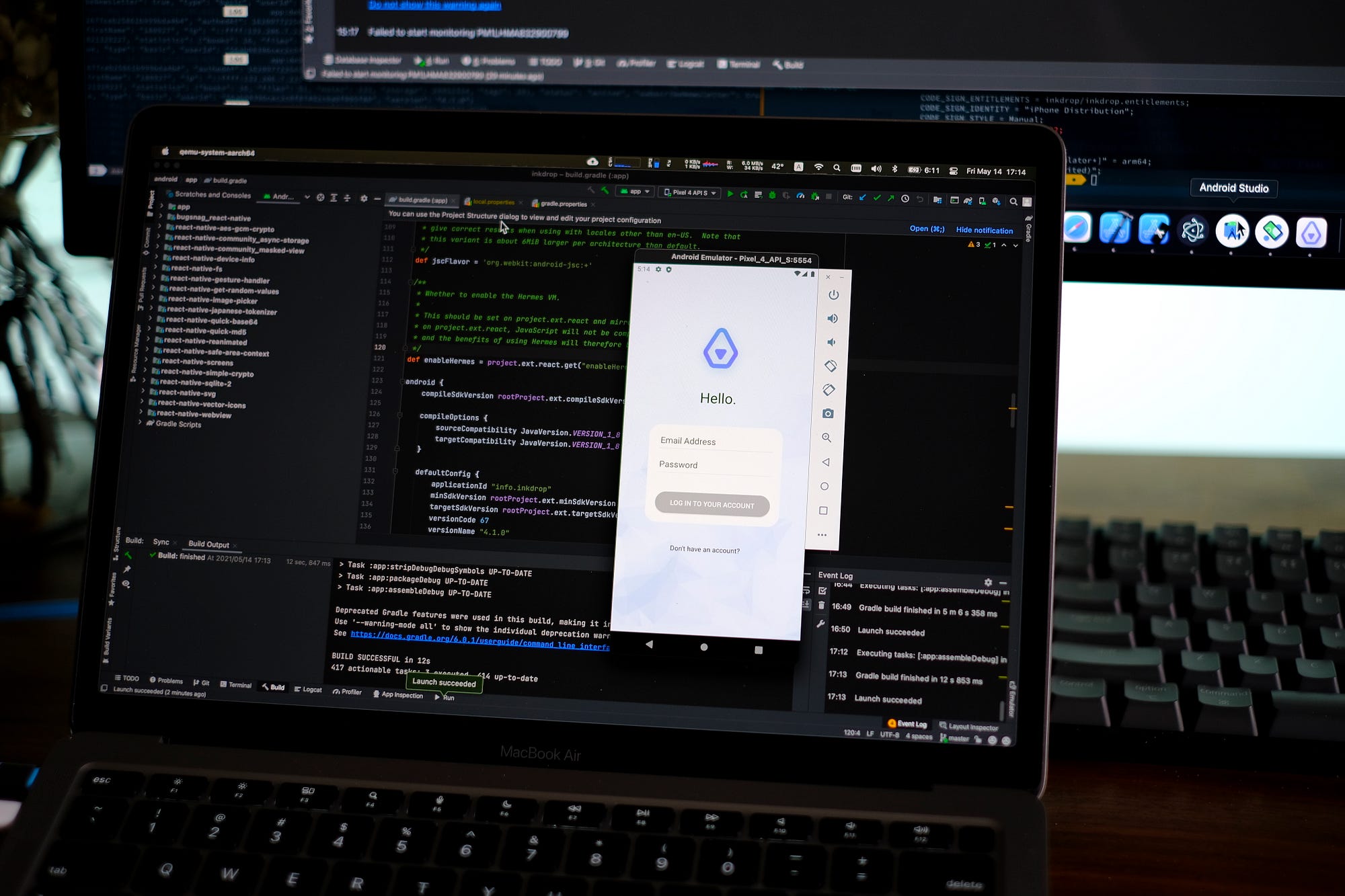
- #React native android emulator mac how to#
- #React native android emulator mac install#
- #React native android emulator mac android#
- #React native android emulator mac software#
Make sure the boxes next to all of the following are checked: Choose a “Custom” setup when prompted to select an installation type.
#React native android emulator mac android#
To do that, go to this URL and choose the Android Studio option.
#React native android emulator mac install#
The next thing you’ll have to do is to download and install Android Studio. If you already have the required version of Node.js, JDK or Phyton on your system, remove them to the above cmd to prevent Chocolatey from re-installing them. If you prefer Powershell over CMD, there’s a (even longer) one-liner for that as well. To install Chocolatey, go to this URL and follow the instructions. In a nutshell, you’ll be asked to open a Command Prompt window with administrative rights and cut-paste there a (very long) one-liner which will take care of installing Chocolatey for you in a single step. (Note that you’ll still be using them – just not from the start!)
#React native android emulator mac software#
Unfortunately, React Native has nothing similar, at least for the moment, forcing all Windows users to concentrate on Android… or to install a MacOS virtual machine using VMware or VirtualBox, which is basically what I’m still doing when I have to write software using XCode or React Native.Īnyway, here’s what we need to do to install React Native and its Android dependencies on Windows: Install ChocolateyĬhocolatey is a cool package manager for Windows that will greatly help you to get the proper things without messing up your system configuration, which is rather easy using other standard, linux-oriented package managers such as npm, yarn and the likes.

The only mobile framework who does actually allow to do something against that is Xamarin, which lets you use a really cool iOS remote simulator for Windows. This is more a Apple cruel restriction than a React Native limitation, though: the sad part about mobile development nowadays is that Apple does not allow any kind of iOS emulator outside their ecosystem, thus forcing any developer who wants to create multi-platform mobile apps to develop using a Mac… Which is kind of sad, if you tell me, since nobody should be forced to use a Mac.

Unfortunately, we cannot build and run iOSapps, as they do require a MacOS (or, to better say, a OSX machine).

The first thing we need to do is to install React Native framework on our system, together with all its required dependencies to build and run Androidapps. Install React Native (and its dependencies) If you are wondering what is this “React” language we’re talking about, we stronglysuggest you to read the React Wikipedia page, as you are missing one of the most important, widely-using and market-dominating front-end UI frameworks from the web nowadays.

#React native android emulator mac how to#
It uses the same design as React, letting you compose a rich mobile UI using declarative components instead of having to learn how to natively do it using Android Studio or XCode.Ĭonversely from other web-to-native frameworks, the apps you’ll be able to build with React Native won’t be mobile web apps wrapped in a native shell (if you know about PhoneGap/Cordoba you know what I mean): they will actually be iOS and Android native app! The only difference is that, instead of using Swift, Kotlin or Java to put together the native UI building blocks, you’ll be to this using JavaScript and React. In a nutshell, Reactive App is a framework for building native apps using JavaScript and React.


 0 kommentar(er)
0 kommentar(er)
